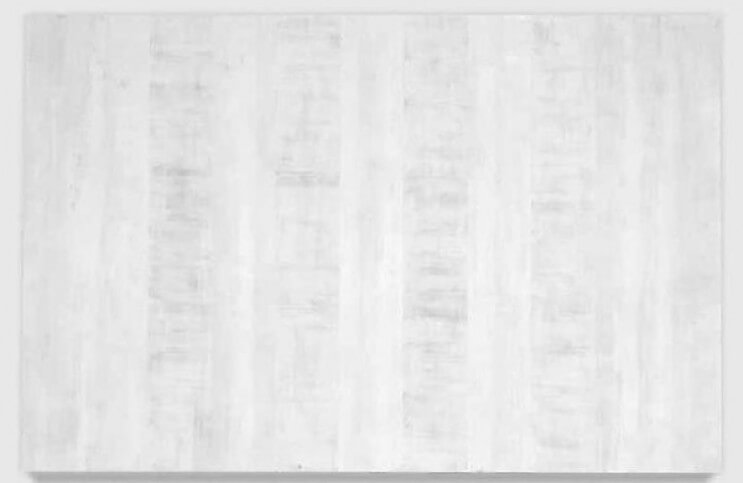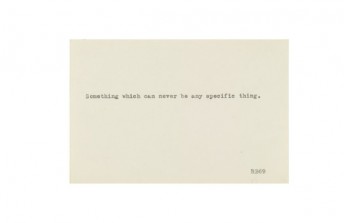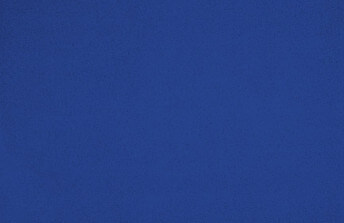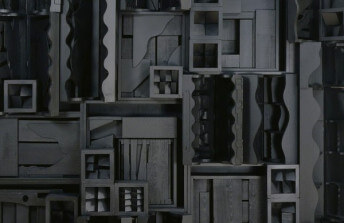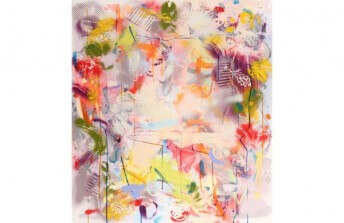Mary Corse's Art in the Spotlight – Finally
Nov 13, 2017
It is sort of a pun to say Mary Corse is having a moment in the spotlight. This multidisciplinary artist has been working with light as an artistic medium since the 1960s. But whereas Corse has been calling our attention to light and its mysteries for decades, it has not been until relatively recently that the institutional art world has put her ideas and accomplishments in its sights. A retrospective exhibition covering the past 50 years of her career just concluded at the Kayne Griffin Corcoran gallery in Los Angeles. It included a monumental work called “Cold Room”—a 12 foot x 12 foot x 12 foot square room cooled to 40 degrees Fahrenheit. Inside the room, viewers found a square, white, neon light box hanging on the wall. The neon light is intended to pull viewers in toward something enigmatic and potentially transcendent. The cold air, Corse believes, heightens viewer awareness. Corse first conceived of “Cold Room” in 1967, but this was the first time she actually built one. She instead focused her energies on her many other light-based works, while also finding myriad other ways to explore how light, space and time alter human perception. If you missed her retrospective, do not fret. More is on the way. In May of 2018, a new gallery featuring four of her works will be unveiled at Dia:Beacon, and the month after that a major survey of her work opens at the Whitney Museum in New York. This recognition has been a long time coming, but perhaps it is fitting that Corse is finally being recognized now. We are at a moment in human history when reality seems to be up for renegotiation, and when work like hers may help us deal with the limitations of logic and reason.
Retroreflectivity is Street Art
Mary Corse was born in Berkeley, California in 1945. As an adolescent, she had the privilege of being part of a small group of students in a private school to study art under a teacher who had graduated from Chouiniard Art Institute (now known as CalArts), a progressive arts college located just north of Los Angeles. When most students her age were learning basic arts and crafts, Corse was studying the theories of Hans Hofmann and the painting techniques of the Abstract Expressionists. That teacher made a profound impact on Corse, who soon moved to Los Angeles herself and rented an art studio downtown. Then in 1968, she, too, earned her Masters Degree in Fine Arts from Chouinard.
It was in Los Angeles that Corse began working with light. She was not only interested in how light illuminates surfaces or expresses color, but also in how light plays a role in perception. Her investigations into this topic led her to something called retroreflectivity—the redirecting of light back to its original source. Retroreflectivity is the principal municipal transportation departments rely on to make street signs visible at night. Rather than putting lights in signs, they insert tiny, reflective beads in them. Those beads magnify the light that hits them and send it back in the same direction from which it came. That is why even small amounts of ambient light make road signs seem to glow. Corse discovered that she could achieve similar effects by mixing her paint with tiny, prismatic beads similar to those used on road signs. Her retroreflective paintings send exhibition lights directly back to the source, making her paintings into kinetic objects that change with every move the viewer makes.
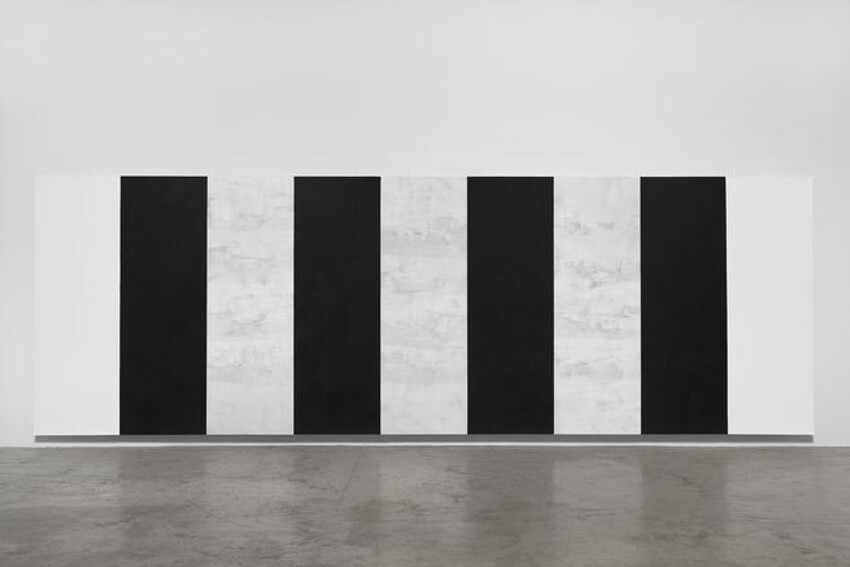 Mary Corse - Untitled, 2017, glass microspheres in acrylic on canvas, 78 x 234 in, 198.1 x 594.4 cm, Photo: Ron Amstutz. Courtesy the artist, Lehmann Maupin, New York and Hong Kong, and Kayne Griffin Corcoran, Los Angeles
Mary Corse - Untitled, 2017, glass microspheres in acrylic on canvas, 78 x 234 in, 198.1 x 594.4 cm, Photo: Ron Amstutz. Courtesy the artist, Lehmann Maupin, New York and Hong Kong, and Kayne Griffin Corcoran, Los Angeles
Painting With Light
In addition to her retroreflective paintings, Corse has also long experimented with direct light as a medium. She builds light boxes and sometimes hangs them directly on the wall, sometimes hangs them from the ceiling, and other times hang the lights on a secondary surface like a board or a canvas and then hangs that surface on the wall. Such works, like “Untitled (White Light Series)” from 1966, confound aesthetic expectations and generalizations. They hang on the wall like paintings but they are also sculptural. Then again the subject seems to be the light, so the work is really not about its surface or its supports at all—it is about the empty space around it that is being illuminated. And something perceptual and conceptual is happening as well. The light is an attracting force, but it is also blinding. Contradictions pile up in these works. They are more than simple aesthetic objects: they are invitations to contemplate the multiple dimensions inherent within what we think of as reality.
What makes Corse stand apart from her contemporaries is that she is engaged in a metaphysical, as well as a material process. She has remained open, and somehow become even more open, over time. She is inquisitive, careful with words, and distrustful of her own perceptions of what is real. When asked once about the nature of human existence, she said, “We live in an abstract perceptual multiverse.” And once when describing her work, she said she hopes people interact with it as though it is “an abstract perceptual experience beyond thought.” That is what has finally attracted institutions like the Whitney and Dia:Beacon to Corse. It is not only that she makes work that is beautiful, perfectly crafted, and conceptually irrefutable; the intrigue also comes from her mind. The aesthetic relics she creates are outgrowths of her mental process. They are secondary to the effects they instigate. And it is precisely those effects that may prove comforting to people who have found that logic and reason have limitations. These works remind us that reality is subjective, and that multiple truths can coexist in the same space and time.
 Mary Corse - Untitled (White Light Series), 1966, Wood, plexiglass, fluorescent tubes (left) and Untitled (Space + Electric Light), 1968, plexiglass, fluorescent tubes (right), © Mary Corse
Mary Corse - Untitled (White Light Series), 1966, Wood, plexiglass, fluorescent tubes (left) and Untitled (Space + Electric Light), 1968, plexiglass, fluorescent tubes (right), © Mary Corse
Featured image: Mary Corse - Untitled (White Inner Band, Beveled), 2008, glass microspheres in acrylic on canvas, 96 x 144 in, 243.8 x 365.8 cm, Courtesy the artist and Lehmann Maupin, New York and Hong Kong
All images used for illustrative purposes only
By Phillip Barcio
